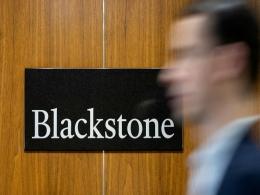The Indian central bank wielded a bigger-than-expected axe for its monetary policy review on Tuesday to cut key policy rates by 50 basis points (as against expectations of 25 basis points) for the first time in three years in a bid to pump up the sluggish economic growth rate.
The Reserve Bank of India (RBI) cut the repo rate (the rate at which banks borrow from the central bank) from 8.5 per cent to 8 per cent, which automatically led to a similar cut in the reverse repo rate to 7 per cent.
Although the rate cut was larger than anticipated, it just shows that the RBI has bunched up two rate cuts at one go as analysts were expecting cuts of 25 basis points in April, to be followed by a similar cut in June-July period.
In line with this, RBI governor Duvvuri Subbarao has also cautioned against expectations of any immediate rate cut. “The reduction in the repo rate is based on an assessment of growth having slowed below its post-crisis trend rate, which in turn, is contributing to a moderation in core inflation. However, it must be emphasised that the deviation of growth from its trend is modest. At the same time, upside risks to inflation persist. These considerations inherently limit the space for further reduction in policy rates.”
This explains why the 30-stock benchmark market index Sensex only rose a modest 0.5 per cent after the policy announcement.
Among interest rate sensitive sectors, the BSE Realty index was up over 1 per cent after the rate cut. The rate cut is expected to be followed by a cut in bank lending rates for new homes, which could see a pick-up in demand for real estate developers. However, others like the auto segment, did not budge much. The BSE Auto index was up just 0.15 per cent.
RBI said that the policy action is expected to stabilise growth around its current post-crisis trend, but contains risks of inflation and inflation expectations re-surging and will enhance the liquidity cushion available to the system.
The country’s largest industry body CII said, “The repo rate cut will provide the boost to investment as well as send a strong signal that turning around growth is of pivotal importance.”
The latest rate cuts come after six months of status quo, which followed a string of over a dozen rounds of rate hikes starting in early 2010. This monetary tightening, precipitated by the stubborn food inflation, nipped the sharp bounce-back of economy after the global financial crisis.
So much so, that the GDP growth moderated to 6.1 per cent during Q3 of 2011-12, from 6.9 per cent in Q2 and 8.3 per cent in the corresponding quarter of 2010-11. This was mainly due to the moderation in industrial growth, from 2.8 per cent in Q2 to 0.8 per cent in Q3, even as the services sector held up with growth of 8.7 per cent in both Q2 and Q3 of 2011-12.
According to the RBI, the main reason for the apparent decline in the trend rate of growth relative to the pre-crisis period is the emergence of significant supply bottlenecks on a variety of fronts – infrastructure, energy, minerals and labour. A strategy to increase the economy’s potential by focusing on these constraints is, therefore, an imperative.
“Going forward into 2012-13, assuming a normal monsoon, agricultural growth could stay close to the trend level. Industry is expected to perform better than in last year as leading indicators of industry suggest a turnaround in IIP growth. The global outlook also looks slightly better than expected earlier. Overall, the domestic growth outlook for 2012-13 looks a little better than in 2011-12. Accordingly, the baseline GDP growth for 2012-13 is projected at 7.3 per cent,” the central bank added.
It also pointed out that the inflation scenario would remain challenging as food inflation, after a seasonal decline, rose again and inflation in respect of protein-based items remained in double digits.
More importantly, “Crude oil prices are expected to remain high and the pass-through of past price increases in the international market to domestic petroleum product prices remains significantly incomplete. There also remains an element of suppressed inflation in respect of coal and electricity,” it said.
But the RBI expects non-food manufactured products’ inflation to remain contained, reflecting the lagged effect of the past monetary policy tightening on aggregate demand. “Consequently, the risk of adjustments in administered prices translating into generalised inflationary pressures remains limited, though there is no room for complacency,” it added.
The central bank will present the next mid-quarter review of monetary policy for 2012-13 on June 18. This will be followed by the first quarter review of the monetary policy for the year on July 31.






